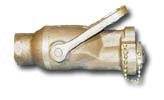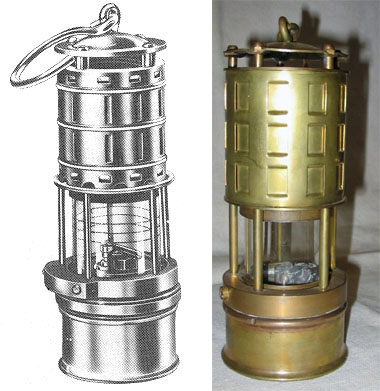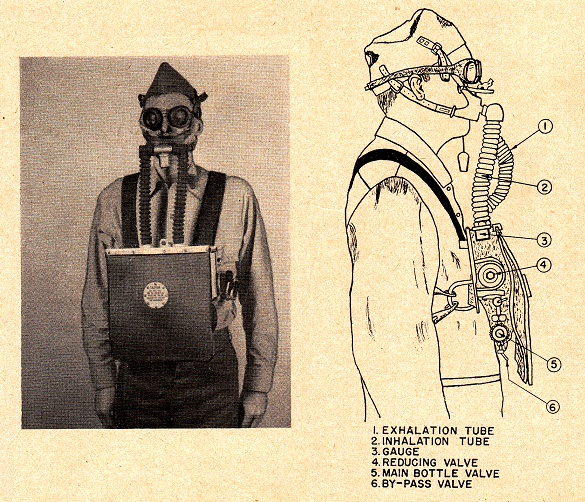|
The Navy oxygen rescue breathing apparatus, an oxygen
cylinder-type apparatus, contained 3 cubic feet of
oxygen and a 30-minute supply. It was used for rescue
and support operations. The supply of air was maintained
manually or automatically using an oxygen cylinder
control valve. There was no timer device. It had a
pressure gauge and a whistle that sounded when the
pressure dropped to the specified level of 15
atmospheres, indicated by a red mark, at which point the
wearer had to turn off the main valve and return to
fresh air to change the cylinder. The rubber mouth piece
was attached to a head cover. Straps, a nose clip, a
rubber eyepiece with plastic lens, a no-speaking
diaphragm, and two hoses attached to a single
chest-mounted, rectangular breathing cooler bag. It had
a harness and “D” ring for the attachment of a
life-line. The apparatus had an air cooler and a
regenerator cylinder filled with one pound of soda lime.
Unlike the other OBAs, the oxygen-cylinder type had
several high-pressure fittings installed with an
oxygen-cylinder supply system. The cylinders were round
and different than the canisters of the Types A, A-1,
A-2 and patrol type OBAs, so they were not
interchangeable. Due to an exhausting supply of spare
parts, the Navy began phasing out the Navy oxygen rescue
breathing apparatus in the early 1950s as units became
unserviceable and spare parts supplies were exhausted.
Some were still in service as late as 1954. |




